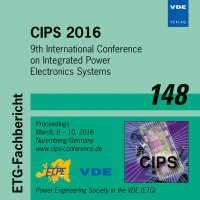Low Temperature Silver Sinter Processes on ENIG Surfaces
Conference: CIPS 2016 - 9th International Conference on Integrated Power Electronics Systems
03/08/2016 - 03/10/2016 at Nürnberg, Deutschland
Proceedings: CIPS 2016
Pages: 6Language: englishTyp: PDF
Personal VDE Members are entitled to a 10% discount on this title
Authors:
Blank, T.; Bruns, M.; Kuebel, C.; Leyrer, B.; Meisser, M.; Weber, M. (Karlsruhe Institute of Technology, Karlsruhe, Germany)
Rudzki, J.; Osterwald, F. (Danfoss GmbH, Flensburg, Germany)
Wilke, K.; Busche, N. (Siemens AG, Berlin, Germany)
Eisele, R. (University of Applied Sciences Kiel, Kiel, Germany)
Abstract:
The demand for compact and highly integrated power electronic devices is growing continuously. However, the increase in power density leads to higher operation temperatures of the power modules causing premature device failures. One of the major failure sources is the standard SAC solder to attach the die. Novel low temperature silver sinter die attachment materials are much more reliable. Most commercially available sinter materials have to be applied on noble surfaces like gold or silver. Therefore, the chip is metalized with silver and the DCB is coated by a layer of electroless nickel and immersion gold (ENIG). However, the sinter process quality on the ENIG layer is not always constant. Shear tests on various ENIG layers have been conducted exposing quality variations covering a range from 5 N/mm2 to more than 90 N/mm2. Wet chemical analysis as well as FIB-SEM and XPS-investigations have been performed to identify the root cause. We observed that test specimens showing lower shear values exhibit a higher copper and nickel concentration on the surface. These non-noble metals influence the formation of the intermetallic phase of the sinter layer and the substrate. Consequently, the mechanical stability and thermal resilience is reduced.


